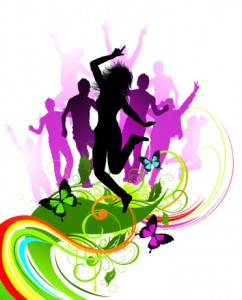MM asks: “I would love to know if Biodanza is New Age or is it in keeping with the Catholic church view.”

![]() The best answer to this question came from the mouth of one of the chief promoters of Biodanza, Francine Nudel Tempel: “Participants need to understand what Biodanza is about, its purpose, and what it is capable of doing. Without the theory, the rest is just movement.” She goes on to say that once the theoretical instruction is over, the dancing or “Vivencia” begins. Described as “the present living moment experienced in full,” she claims it is designed to teach the five basic elements of Biodanza: vitality, sexuality, creativity, affectivity and, finally, transcendence – “to go beyond our own ego in order to reach higher levels of integration within Humanity, Nature and Universe.”
The best answer to this question came from the mouth of one of the chief promoters of Biodanza, Francine Nudel Tempel: “Participants need to understand what Biodanza is about, its purpose, and what it is capable of doing. Without the theory, the rest is just movement.” She goes on to say that once the theoretical instruction is over, the dancing or “Vivencia” begins. Described as “the present living moment experienced in full,” she claims it is designed to teach the five basic elements of Biodanza: vitality, sexuality, creativity, affectivity and, finally, transcendence – “to go beyond our own ego in order to reach higher levels of integration within Humanity, Nature and Universe.”
Biodanza, which means “Dance of Life” is being promoted by two Jewish women living in Santiago, Chile – Francine Nudel Tempel and Sima Nisis de Rezepka. Francine is the mother of three grown children who teaches French as well as Tai Chi and Chi Gong, and Sima is a career academic who currently teaches Hebrew at a Chilean university. The technique itself was developed by psychologist and anthropologist Rolando Toro in 1965 who was investigating the effect of music and dance on psychiatric patients.
“His approach focused on physical activity and simulating emotions through music, dance, and human encounters,” reports Jerusalem Post columnist Carl Hoffman in 2008. “Word soon spread of the success of these techniques, and in 1970 the Catholic University of Chile invited Toro to create a class in what he was now calling ‘Psychodance.’ With the subsequent creation of new contact and communication exercises, new dance activities, and the careful documentation of the neuropsychological effects of the exercises on different clinical conditions, Toro’s techniques and approaches soon flowed outward from clinical venues to reach the general public. Biodanza, the Dance of Life, was born.”
Hoffman goes on to describe a typical class: “Almost 20 people, mostly young and female, have been dancing, emoting, and embracing each other for almost two hours. They have writhed sensually through a Latin Rumba, marched purposefully across the room to a military tune, strutted smartly back and forth to the accompaniment of Dixieland jazz, and gracefully mimicked the gentle movements of flowers in a soft summer breeze to the breathy notes of a Japanese flute. They have hugged and caressed, gently held each other’s faces in their hands and gazed into each other’s eyes. They have smiled ecstatically and laughed blissfully through tears. Now, as the session concludes, each person is slowly passing through a gauntlet formed by the others, in which faces are kissed, hair is stroked, and arms and legs are gently massaged. Everyone appears to be exhilarated.”
Obviously, there’s nothing wrong with music and dancing, but Toro, Sima and Francine take this much further with their emphasis on using Biodanza to achieve an altered state of transcendence.
In a statement posted on a blogsite for Biodanza on the East Coast, Rolando Toro explains that the formation of a Biodanza “professor” is essentially meant to “discover a mission, transmit the state of grace, show new ways to pursue love and awake the enlightened consciousness.”
He goes on to say that “many people don’t know they carry inside a divinity” and that to live is a special opportunity to “perceive ‘the eternal human’ and to feel in the body the life’s sacredness.”
This reeks of the humanist philosophy which is the bedrock of the New Age movement.
No matter how avant garde Biodanza might appear, resist the urge to be at the vanguard of the New Age fitness industry and enroll yourself in a nice sweaty Zumba class instead. You’ll have a blast, get a good workout, and won’t have to stroke the faces of people you don’t know.
Send your New Age questions to newage@womenofgrace.com









